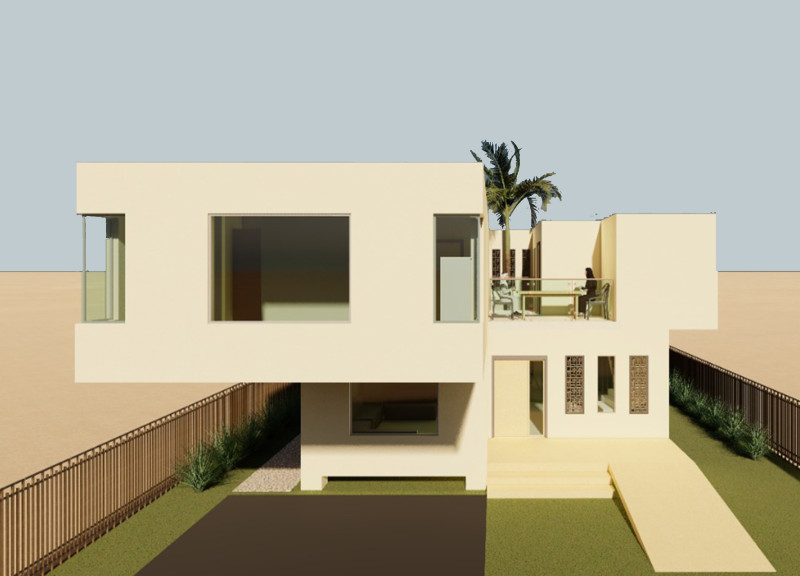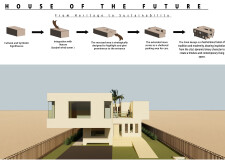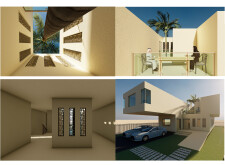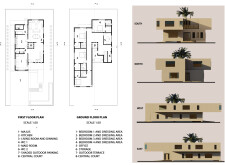5 key facts about this project
## Analytical Report on the House of the Future Architectural Design Project
### Overview
Located in a climate-sensitive region, the House of the Future project explores the intersection of cultural heritage and modern sustainability practices. The design aims to address contemporary environmental challenges while reflecting traditional architectural elements. The integration of these components creates a dwelling that honors its cultural roots while meeting the functional demands of modern living.
### Spatial Arrangement
The layout effectively promotes fluidity and maximizes access to natural light and ventilation. The ground floor features a Majlis that serves as a communal space, a centrally-located kitchen, and living and dining areas that offer panoramic views of the surrounding landscape. Essential facilities, including bathrooms and a maid's room, are strategically positioned for convenience while maintaining privacy from public spaces. The inclusion of shaded outdoor parking and a central courtyard enhances both utility and comfort in response to the local climate.
The first floor is designed with multiple bedrooms and an office, accommodating multigenerational living and modern work-from-home arrangements. An outdoor terrace and central court further facilitate a connection to nature, enriching the residential experience.
### Material Selection
The choice of materials underscores a commitment to sustainability and craftsmanship. Key elements include:
1. **3D Printed Concrete**: This innovative material minimizes waste and facilitates complex geometries through a mixture of cement, water, glass fibers, and additives, thereby lowering labor costs.
2. **Double-Glazed Glass**: Utilized for improved thermal performance and acoustic insulation, this glazing system consists of two panes separated by an insulating layer.
3. **3D Printed Mashrabiya**: Constructed from recycled fibers and plastics, this decorative screen marries traditional Islamic design with contemporary sustainable practices, serving both aesthetic and functional roles as a shading device.
This approach to materiality not only enhances the environment's efficiency but also strengthens ties to the local context and craftsmanship.






















































